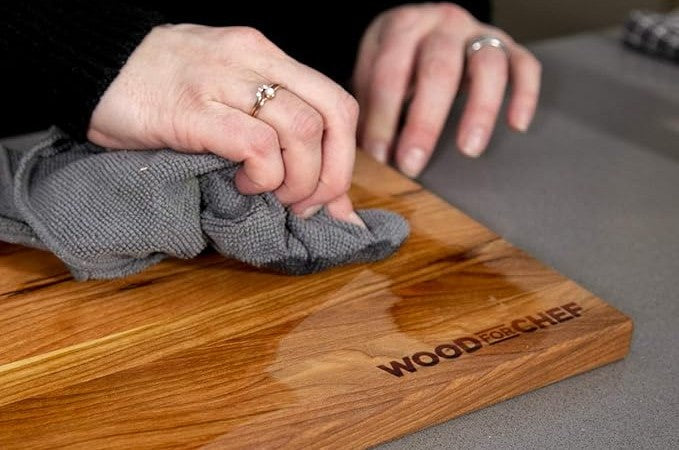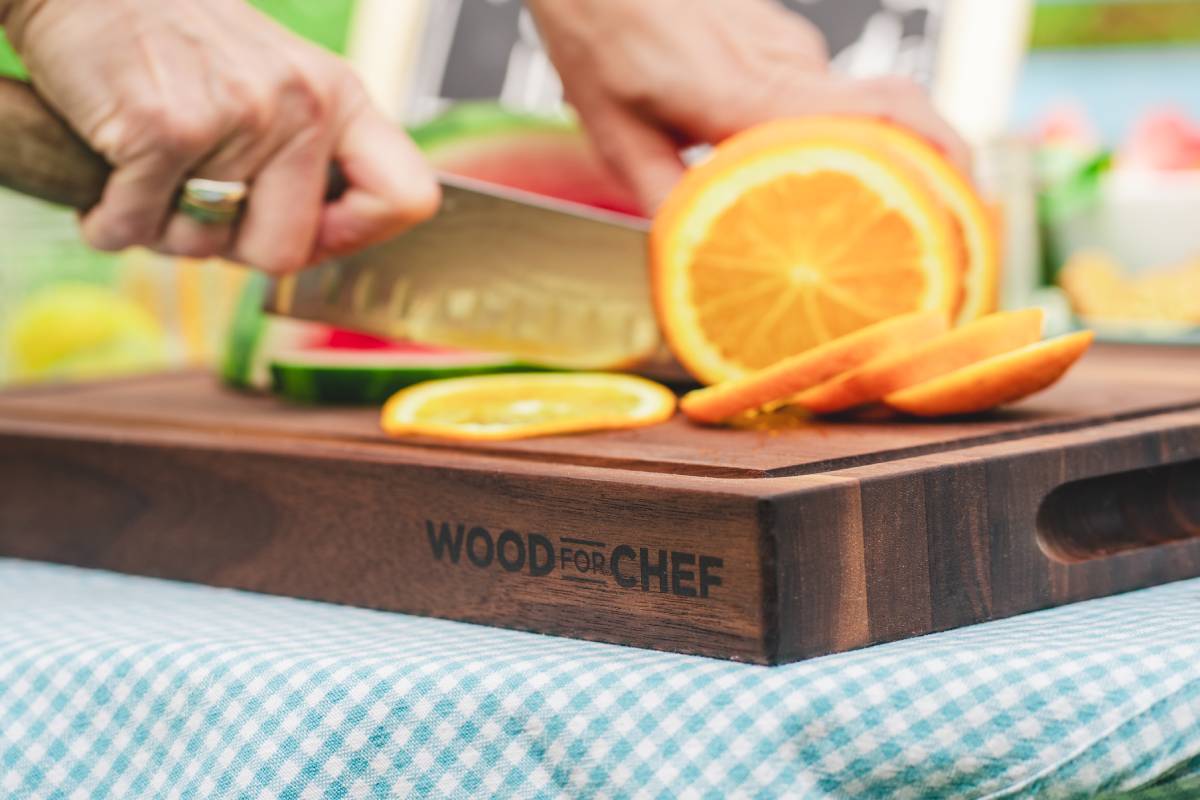Wood Cutting Board Care: The Essential Guide for Every Home Kitchen
A quality wooden cutting board is more than just a kitchen tool,it's an investment in your culinary journey. With proper care, your wooden cutting board can serve you faithfully for decades, developing character and becoming more beautiful with age. This comprehensive guide will walk you through everything you need to know to keep your wooden cutting board in pristine condition.
Understanding your wooden cutting board
Before diving into care techniques, it's essential to understand what makes wooden cutting boards special. Unlike plastic or glass alternatives, wood naturally possesses antimicrobial properties that help keep your food preparation surface safer. The wood fibers also self-heal minor knife marks, making them gentler on your knives while maintaining their functionality.
Different wood types require slightly different care approaches. Hardwoods like maple, walnut, and cherry are popular choices due to their durability and tight grain structure. Bamboo, while technically a grass, is treated similarly to hardwood cutting boards.
Daily Care: Simple Habits for Long-Term Success
Cleaning After Use
Before your new wood cutting board sees its first tomato or loaf of bread, it needs to be "seasoned" to protect it from moisture, stains, and warping. Our wood cutting boards come pre-seasoned, and so ready to be used.
After each use, scrape away food particles with a bench scraper or the back of a knife. Wash the board promptly with warm water and a small amount of mild dish soap, using a scrub brush or sponge to remove stubborn residue.
Drying is Critical
The key to preventing damage is thorough drying. After washing, towel-dry your board immediately, then prop it upright in a well-ventilated area to air-dry completely. Never store a damp cutting board in a closed cabinet or drawer, as trapped moisture can lead to warping, cracking, or mold growth.
Monthly Maintenance: keeping your board in eeak condition
Oiling your wooden cutting board
Even with excellent daily care, wooden cutting boards need regular maintenance to stay in optimal condition. Monthly conditioning helps replenish the wood's natural oils and maintains the protective barrier.
Start by cleaning your board thoroughly and allowing it to dry completely. Apply a thin layer of mineral oil, working it into the wood with a clean cloth. Pay special attention to the edges and any areas that appear dry or lighter in color. Allow the oil to penetrate for at least 30 minutes, then wipe away any excess.
Deep Cleaning Techniques: stains and odor solutions
Baking Soda Paste
Sometimes regular cleaning isn't enough to address persistent stains or strong odors. When this happens, natural cleaning methods can restore your board without damaging the wood.
For general deodorizing and light stain removal, create a paste using baking soda and water. Spread this paste over the affected areas and let it sit for 10-15 minutes before scrubbing gently with a soft brush. Rinse thoroughly and dry completely.
Lemon and Salt Scrub
For tougher stains and odors, try the salt scrub method. Sprinkle coarse salt generously over the board's surface, then use half a lemon to scrub the salt into the wood. The combination of salt's abrasiveness and lemon's natural acidity helps lift stains while neutralizing odors. Let the mixture work for 5-10 minutes, then rinse and dry thoroughly.
After any deep cleaning session, always recondition your board with oil and finish to restore its protective barrier.
Common Mistakes to Avoid
Understanding what not to do is just as important as knowing proper care techniques. Never put your wooden cutting board in the dishwasher, as the high heat and harsh detergents can cause cracking, warping, and finish damage.
Avoid using bleach or other harsh chemicals, which can penetrate the wood and affect food safety. Similarly, never use your wooden cutting board as a hot pad, as extreme temperature changes can cause cracking and warping.
Don't store your board in direct sunlight or near heat sources, which can cause the wood to dry out and crack. Conversely, avoid storing it in damp areas where moisture can cause problems.
Signs your board needs attention
Learning to recognize when your cutting board needs care prevents small issues from becoming major problems. If the wood appears dry, dull, or lighter in color, it's time for an oil treatment. Deep knife marks or rough texture indicate the need for light sanding and reconditioning.
Persistent odors that don't respond to regular cleaning signal the need for deep cleaning. If you notice any soft spots, mold, or extensive cracking, it may be time to replace your board.
Choosing the right products for maintenance
Not all cutting board care products are created equal. Look for food-safe mineral oil rather than vegetable oils, which can become rancid over time. Specialized cutting board oils often contain additional conditioning agents that provide superior protection.
For finishes, choose products specifically designed for cutting boards. Avoid general wood finishes, which may not be food-safe and can interfere with proper cleaning.
Smart Storage extend the life of your board
Proper storage extends your cutting board's life significantly. Store boards upright in a dry, well-ventilated area where air can circulate freely around them. If you must store boards flat, place spacers between them to allow air circulation.
Consider investing in a cutting board rack or stand that keeps your boards organized while providing proper ventilation. Wall-mounted storage solutions can save counter space while ensuring proper air circulation.
Conclusion
Caring for your wooden cutting board doesn't have to be complicated or time-consuming. With consistent daily care, regular monthly maintenance, and occasional deep cleaning, your board will serve you faithfully for years to come.


